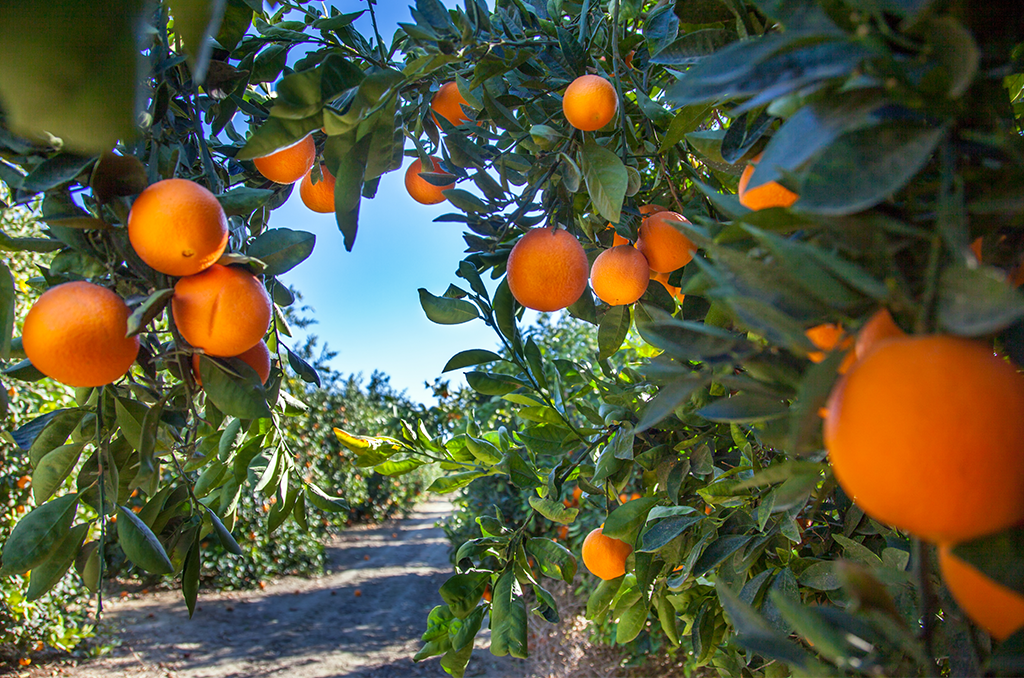Orange Plantation – Courtesy: Shutterstock – Image by SchnepfDesign
Florida’s orange harvest is predicted to reach its lowest level since before World War II as a result of extreme weather conditions and a persistent disease affecting citrus fruit. This will reduce the state’s already limited supply and raise orange juice costs.
Florida is anticipated to produce 20 million boxes of oranges in the 2022–2023 season, the Department of Agriculture announced on Friday. The smallest amount produced since the 1936–1937 season, would represent a 51 percent decrease from the previous year.
According to Shannon Shepp, executive director of the Florida Department of Citrus, a state agency, the scarce crop is a result of a disease called citrus greening, which has long affected Florida orange trees and reduced supplies, as well as a January freeze and the dual blows of Hurricanes Ian and Nicole.
Consumers who already have to contend with rising food prices could be harmed by Florida’s declining supply. These supply chain problems will probably cause the price of orange juice, which had already increased significantly this year, to increase even further in the first half of 2023.
However, it is the orange growers who will pay the greatest price of all.
“It is an incredibly heartbreaking moment for growers,” Shepp said. “To grow a crop for nine months and then watch it fall to the ground, or watch trees blow over, is incredibly devastating,” she added. “In a time when you’re seeing declined production anyway, it’s a kick in the gut.”
The majority of the Sunshine State’s oranges are used for orange juice production. Orange juice makers will need to search for supply elsewhere to make up for the shortage, including from the international market, said Shepp.
A drastic fall in Florida oranges
Greening was the main problem internationally for a while. It had taken hold in the Sunshine State by 2008, Shepp said. “By now, we’re estimating that 100 percent of [Florida] groves are impacted,” she said.
The disease deprives orange trees of key nutrients. During the course of the untreatable disease, the infected tree produces fewer, poorer-quality oranges. It can completely kill a tree over a short amount of time.
Over time, Florida’s orange production has drastically decreased due to illness and unfavorable weather. Florida produced 240 million boxes of oranges in 2004, according to Shepp, which is more than 10 times the amount anticipated for this year.
Growers in Florida are researching strategies to combat the illness, including observing trees that don’t appear to be susceptible to greening, breeding kinds that are resistant to the infection, and using screens to shield trees from the insects that spread the disease.
“This was the season that that growers were going to start implementing new greening mitigation strategies,” Shepp said. But the bad weather put those plans on hold and exacerbated the situation.
With a supply decrease, orange juice prices will begin to increase quickly.
“We’re going to have higher prices because we’re so short on supply — historically short,” said Tanner Ehmke, lead economist for specialty crops and dairy at CoBank.
Make sure you are staying up-to-date with the latest and most important Florida news with Florida Insider. Whether you are interested in business, education, government, history, sports, real estate, nature, weather, or travel: we have something for everyone. Follow along for the best stories in the Sunshine State.

Born and raised in South Florida, Krystal is a recent graduate from the University of Miami with professional writing experience at the collegiate and national news outlet levels. She’s a foodie who loves all things travel, the beach, & visiting new places throughout Florida.

